Forensic Science and Law: An Analysis of the Hien Puoc Tang Case
VerifiedAdded on 2021/06/17
|15
|800
|31
Case Study
AI Summary
This case study analyzes the Hien Puoc Tang case, focusing on the use of forensic evidence, specifically facial and body mapping techniques, in an armed robbery trial. The analysis details the robbery, the subsequent investigation, and the challenges in presenting the evidence, which included poor quality surveillance footage. The case explores the admissibility of expert testimony, particularly the criticisms of the methods used by Dr. Sutisno, and the court's rejection of the evidence due to lack of specialized knowledge and reliability concerns. The analysis compares the Tang case with the Daubert v. Merrell Dow Pharmaceuticals case, which influenced the court's decision. The study also examines similar cases and the reforms and repercussions of the Tang case, emphasizing the importance of scientific rigor, validation of techniques, and the impact of technological advancements on forensic science. The conclusion highlights the interplay between science, law, and forensic science, underscoring the need for forensic practitioners to present evidence accurately and understandably to avoid confusing the jury. The case's impact on the field of forensic science is discussed, emphasizing the need for accuracy and reliable results.
1 out of 15
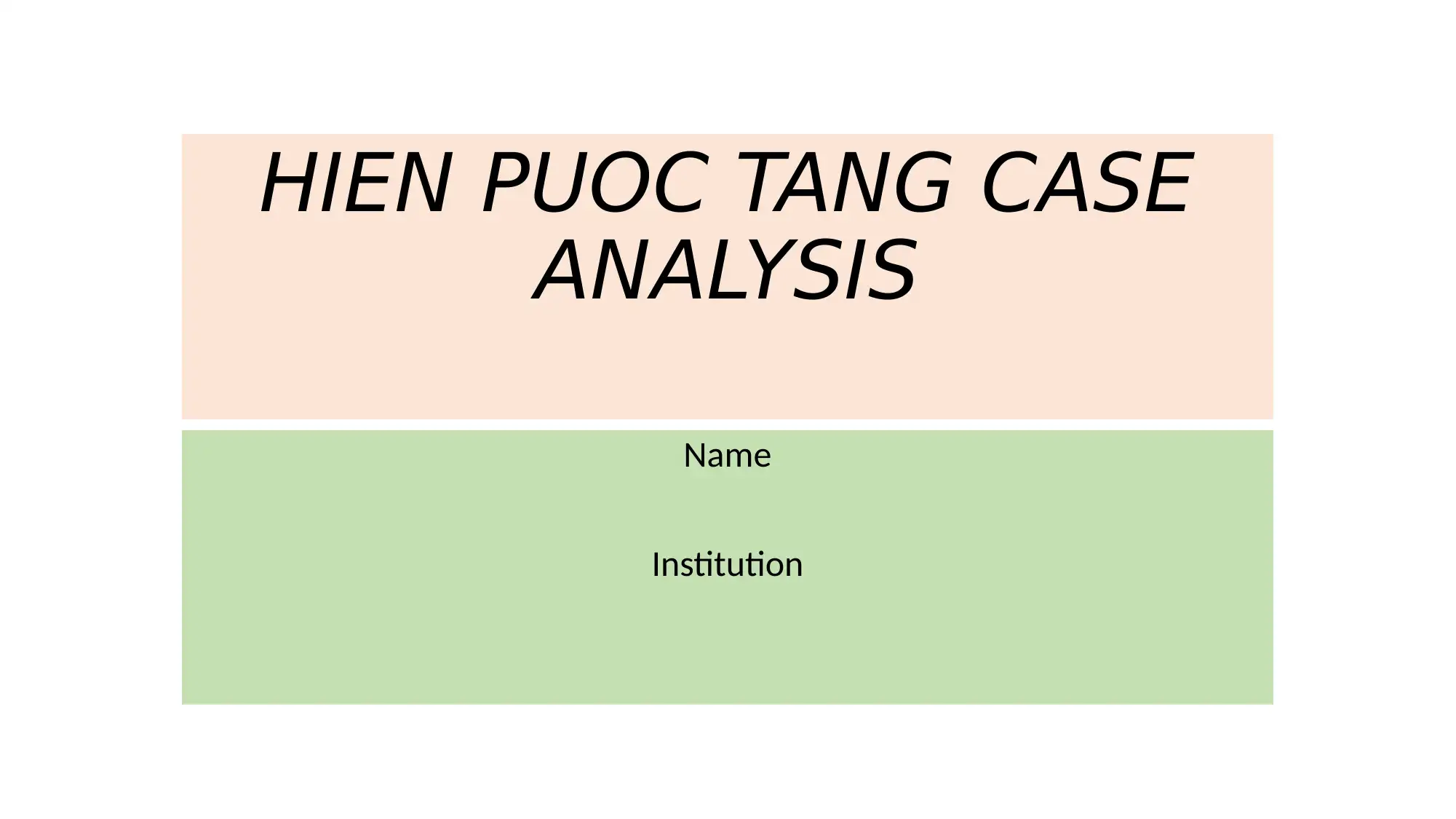
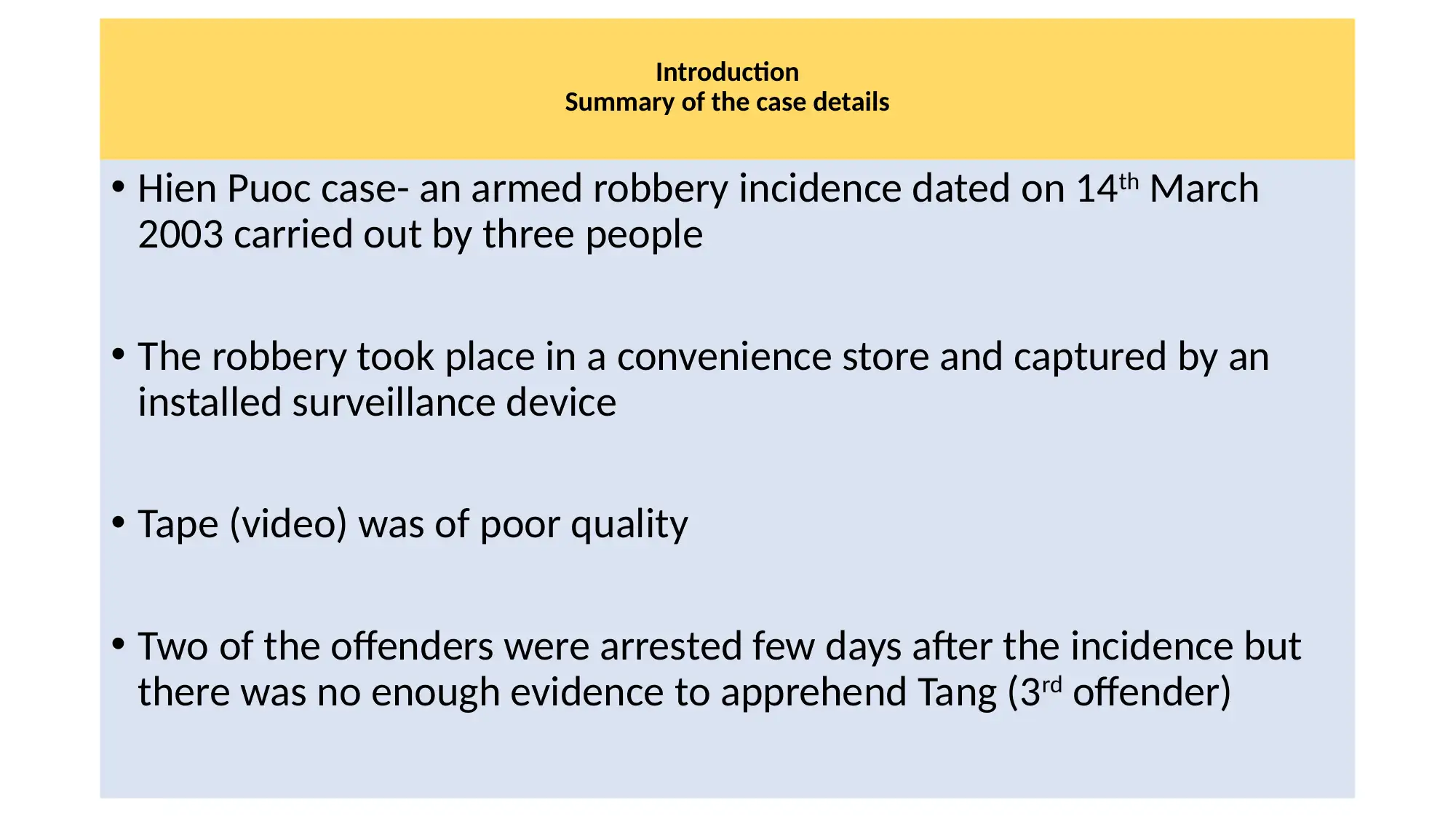
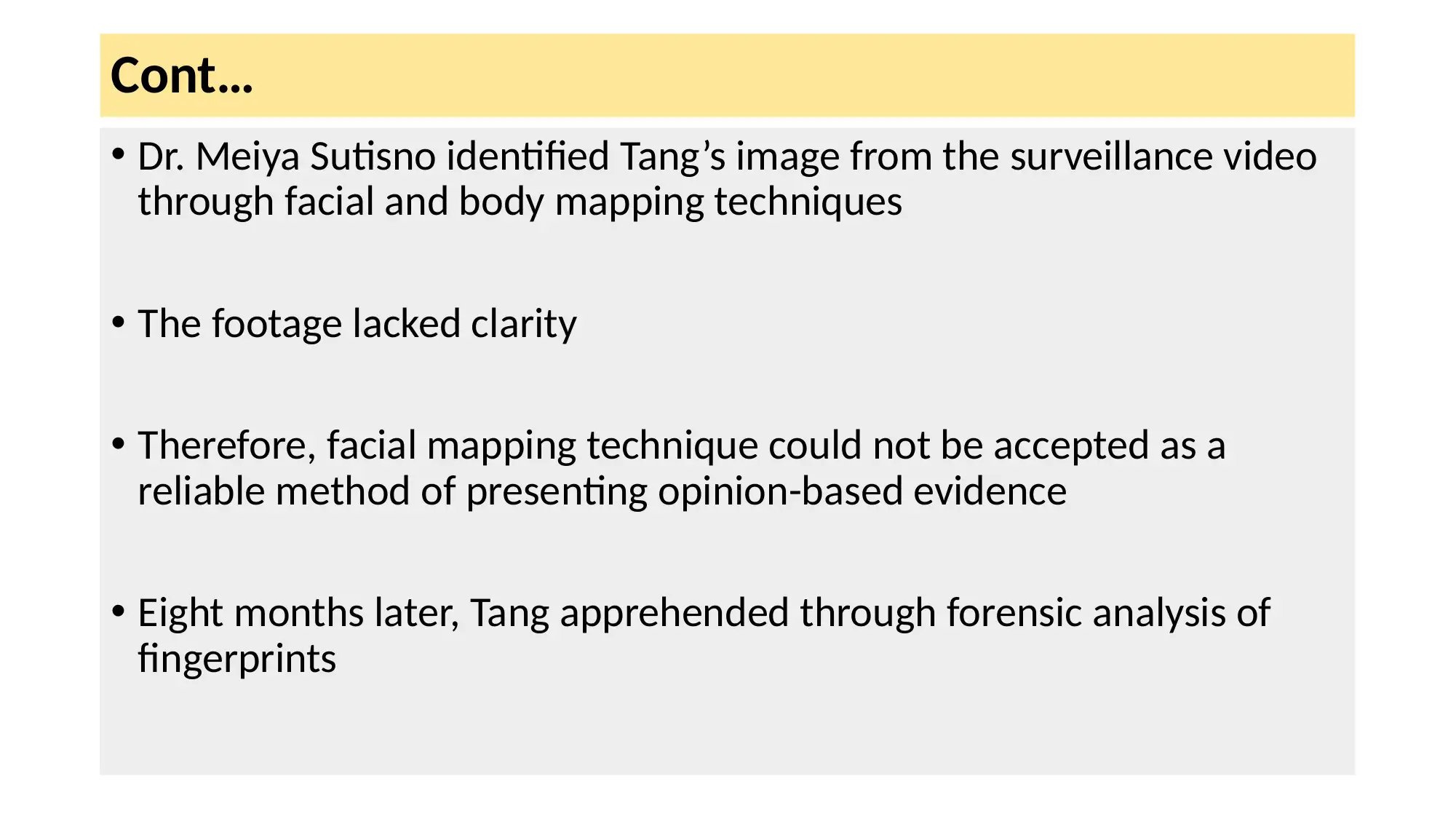

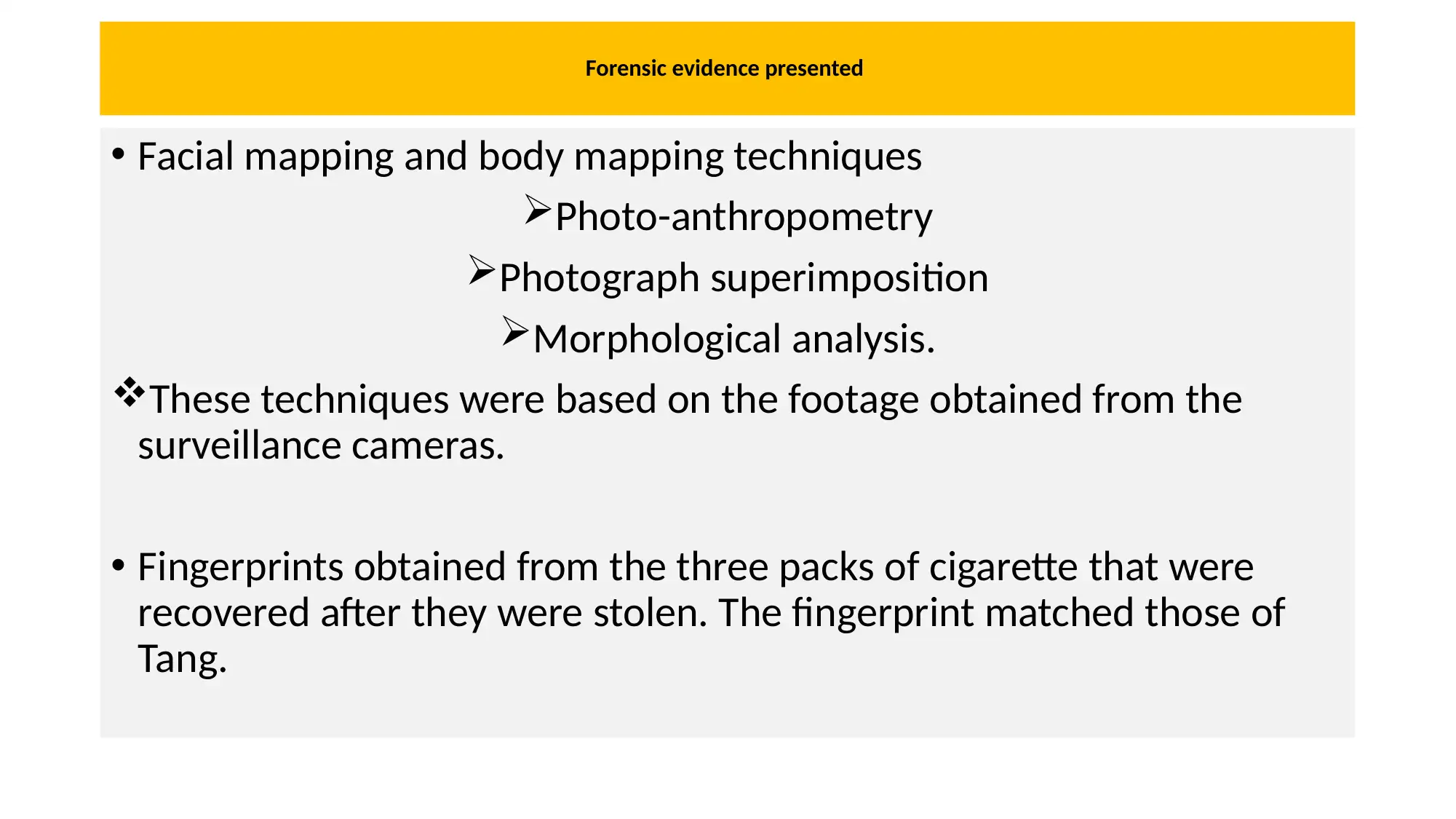
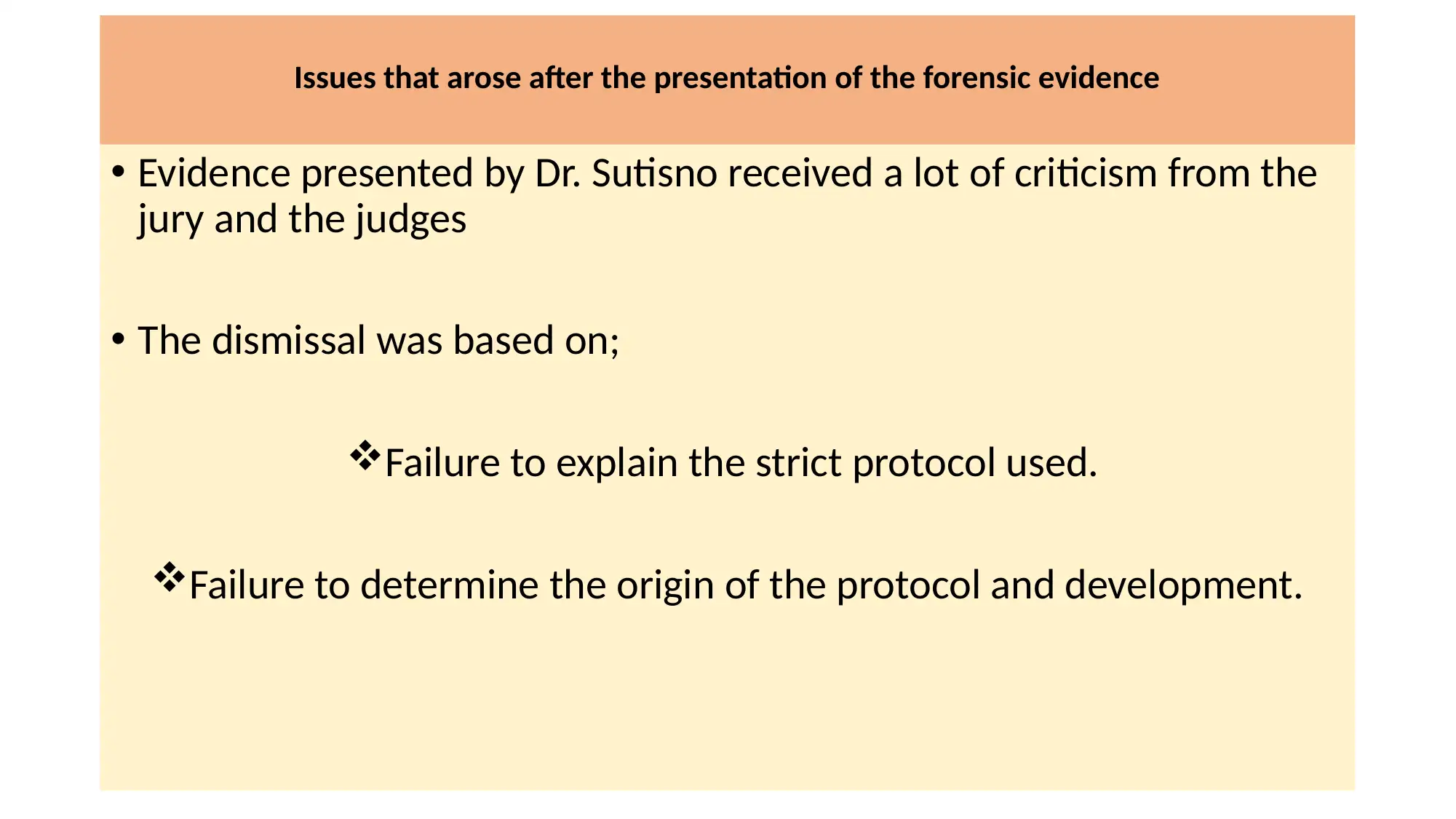
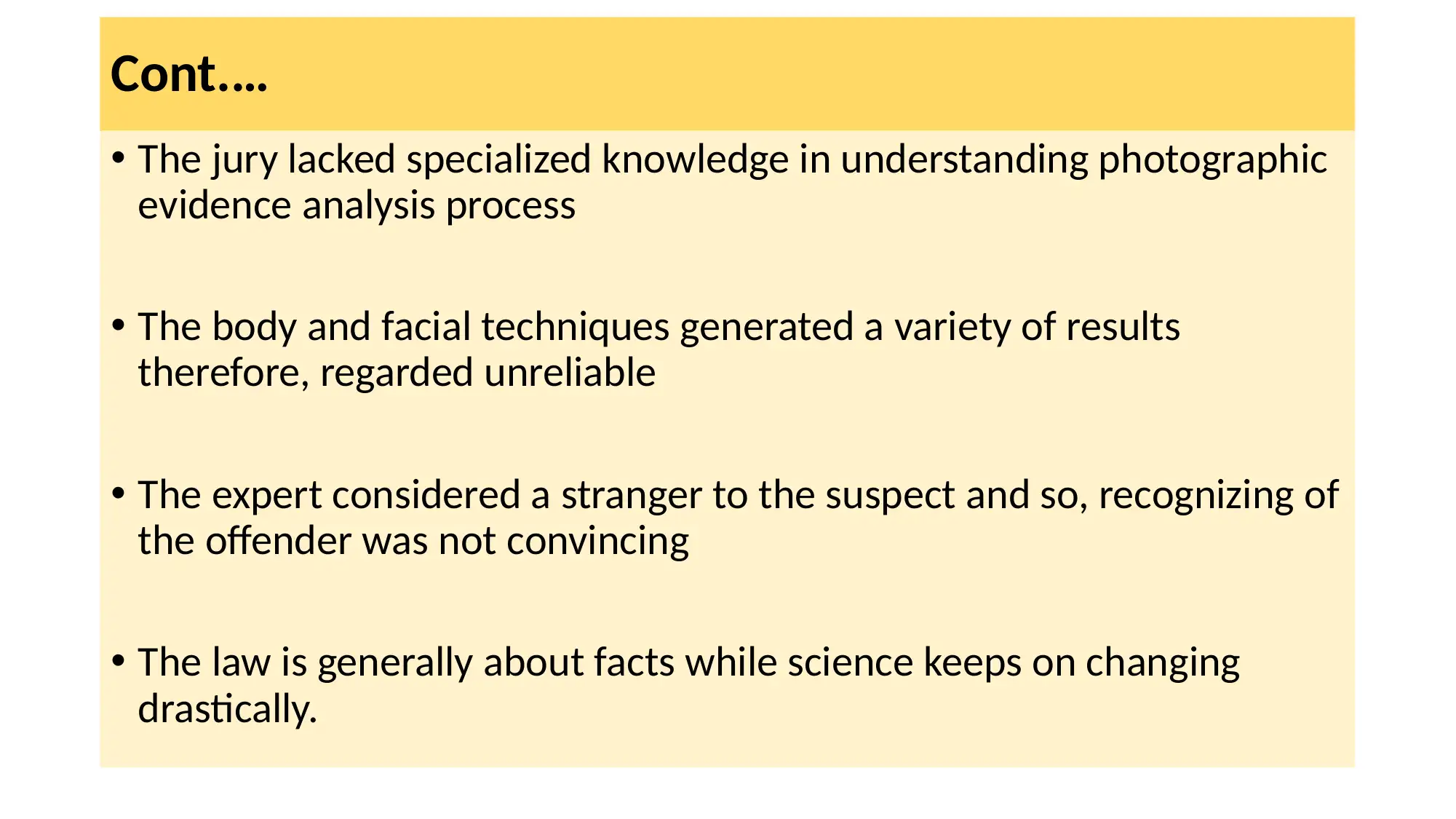
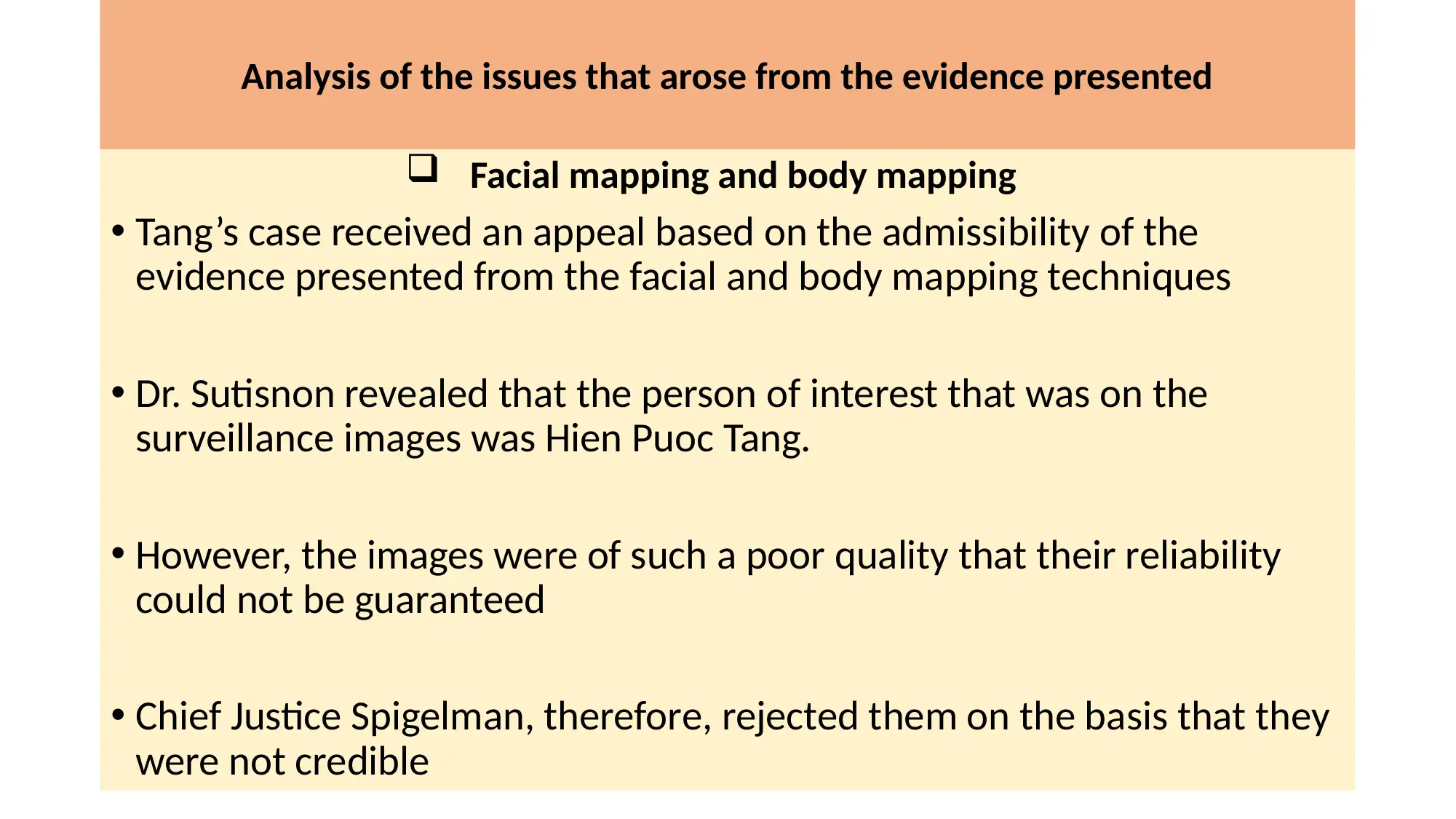
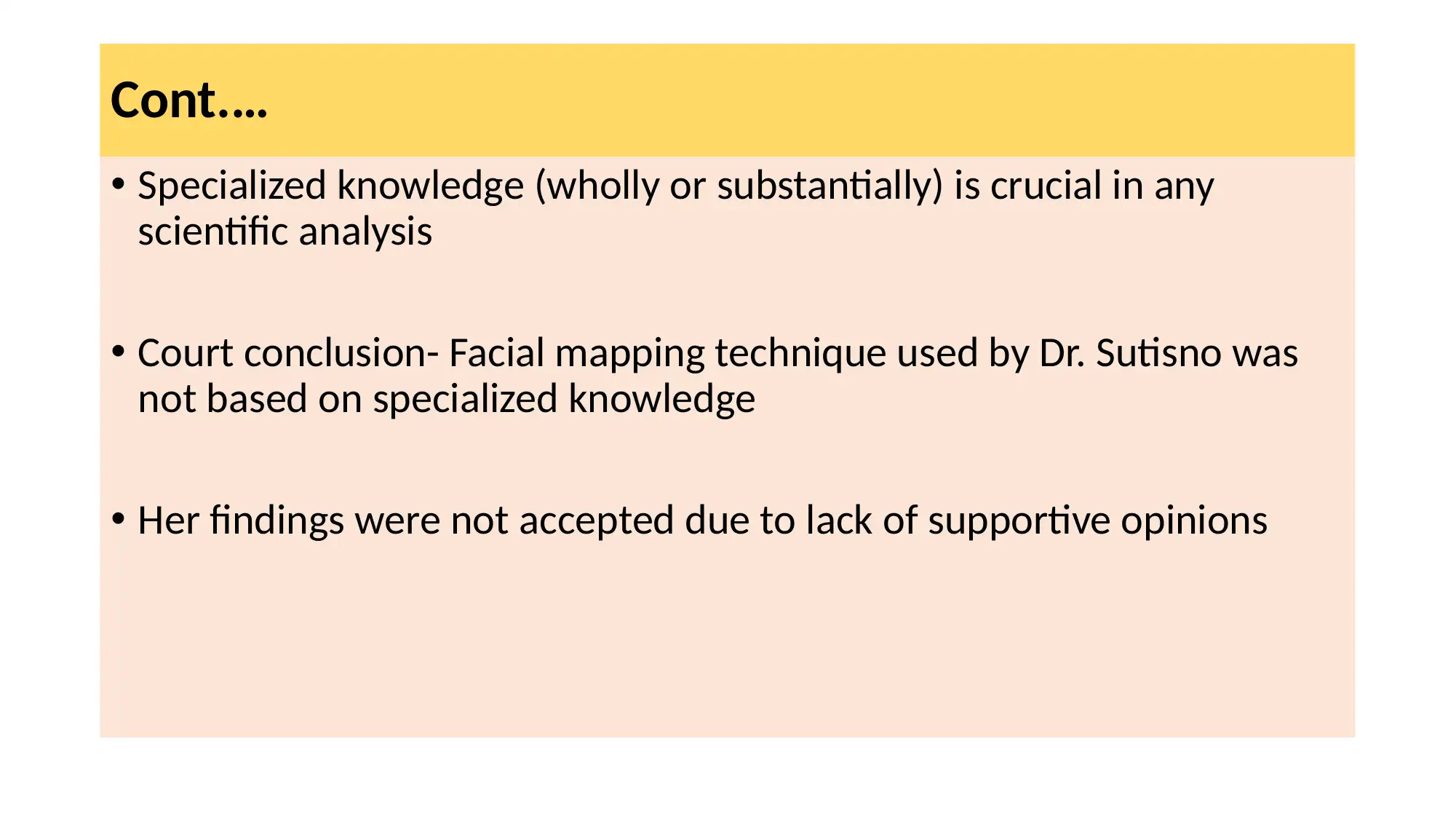
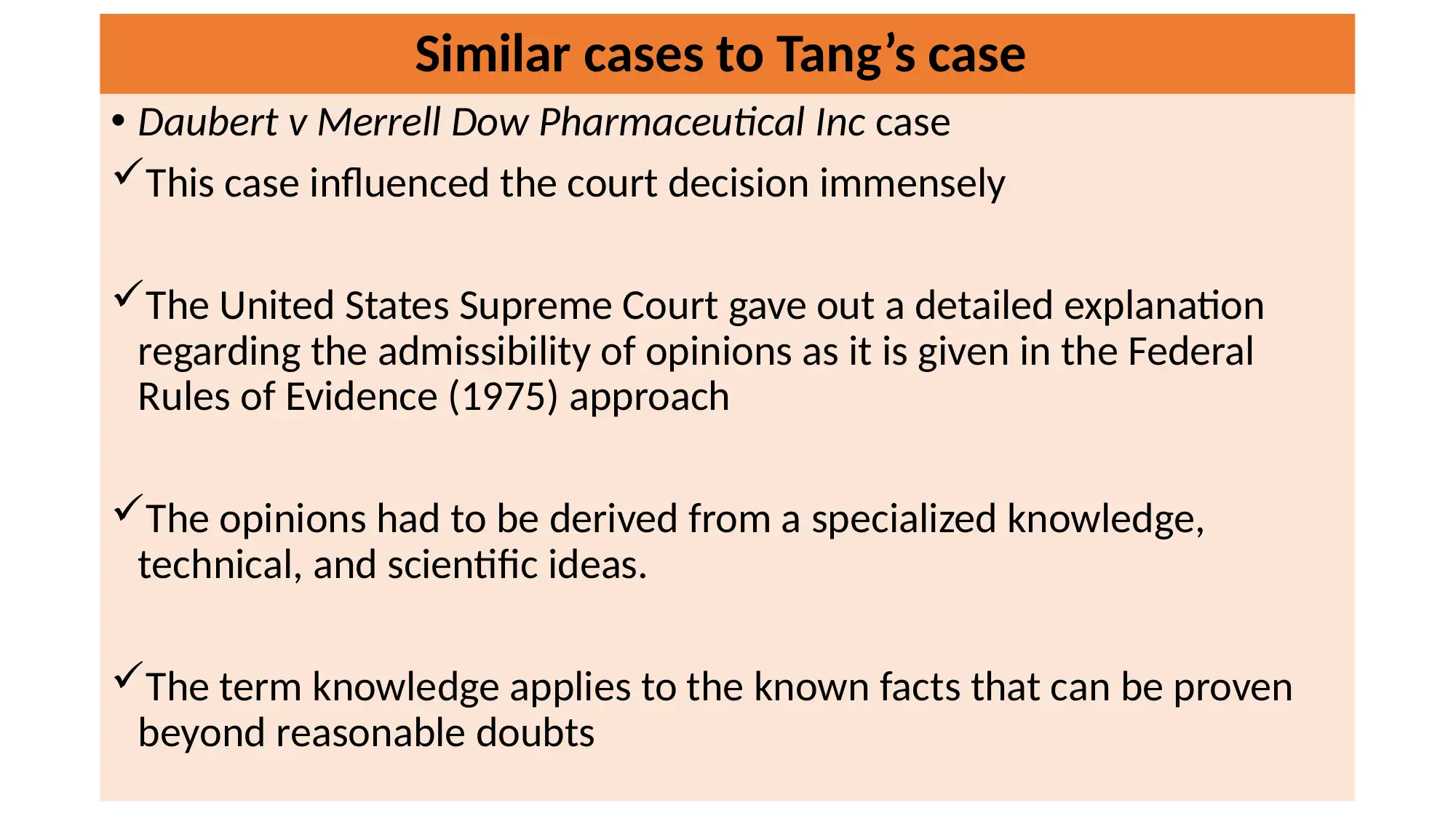
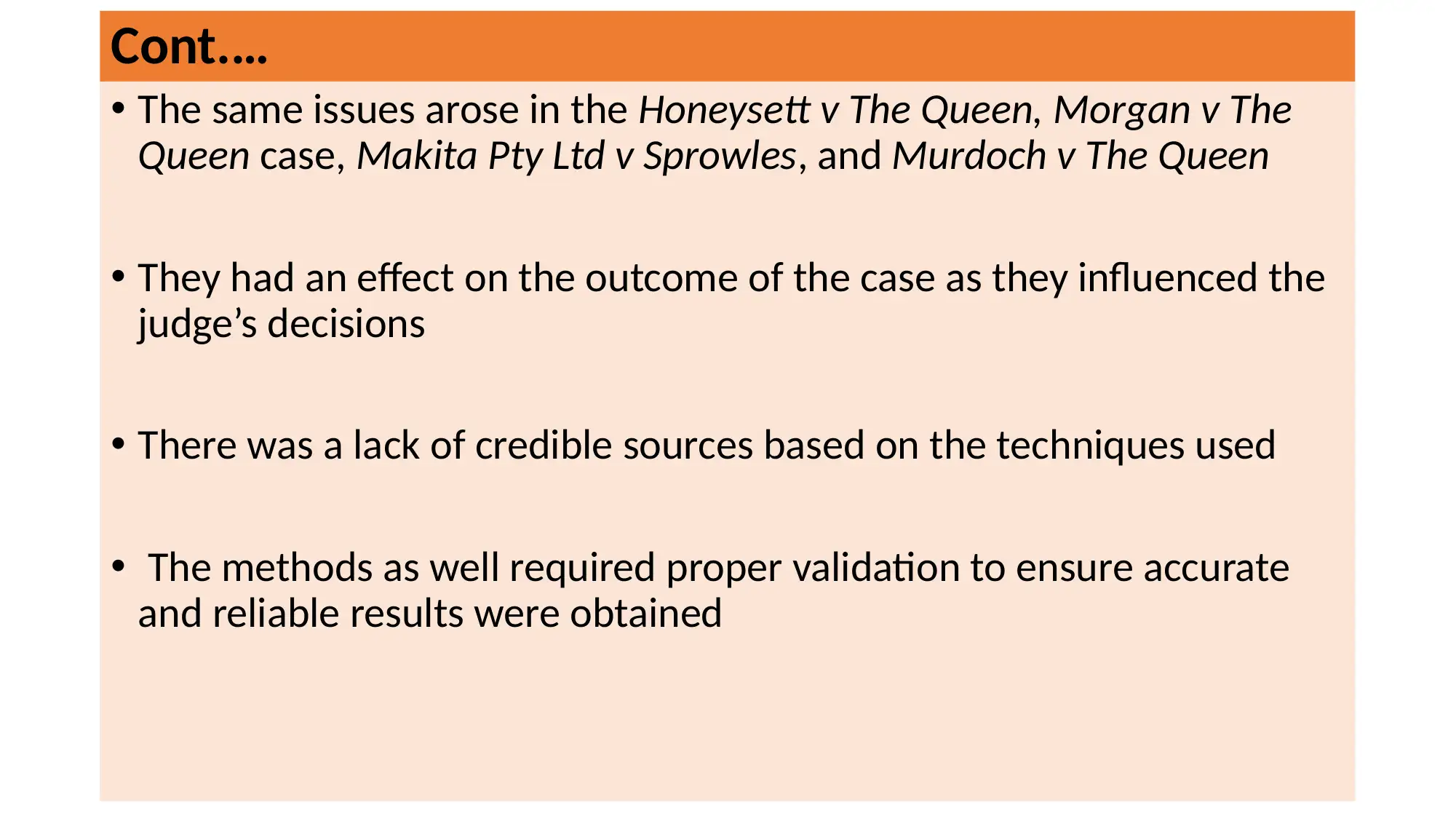
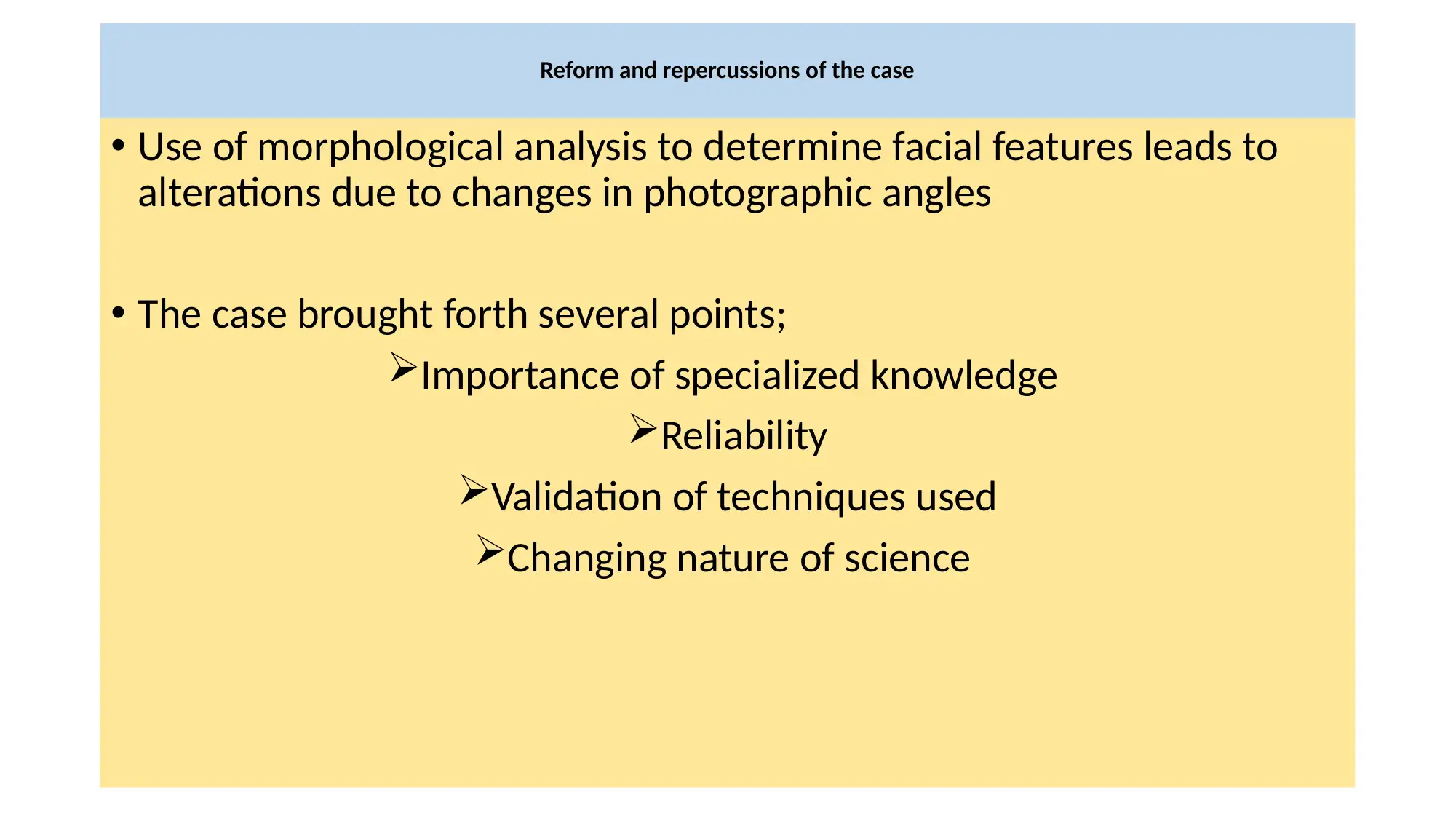
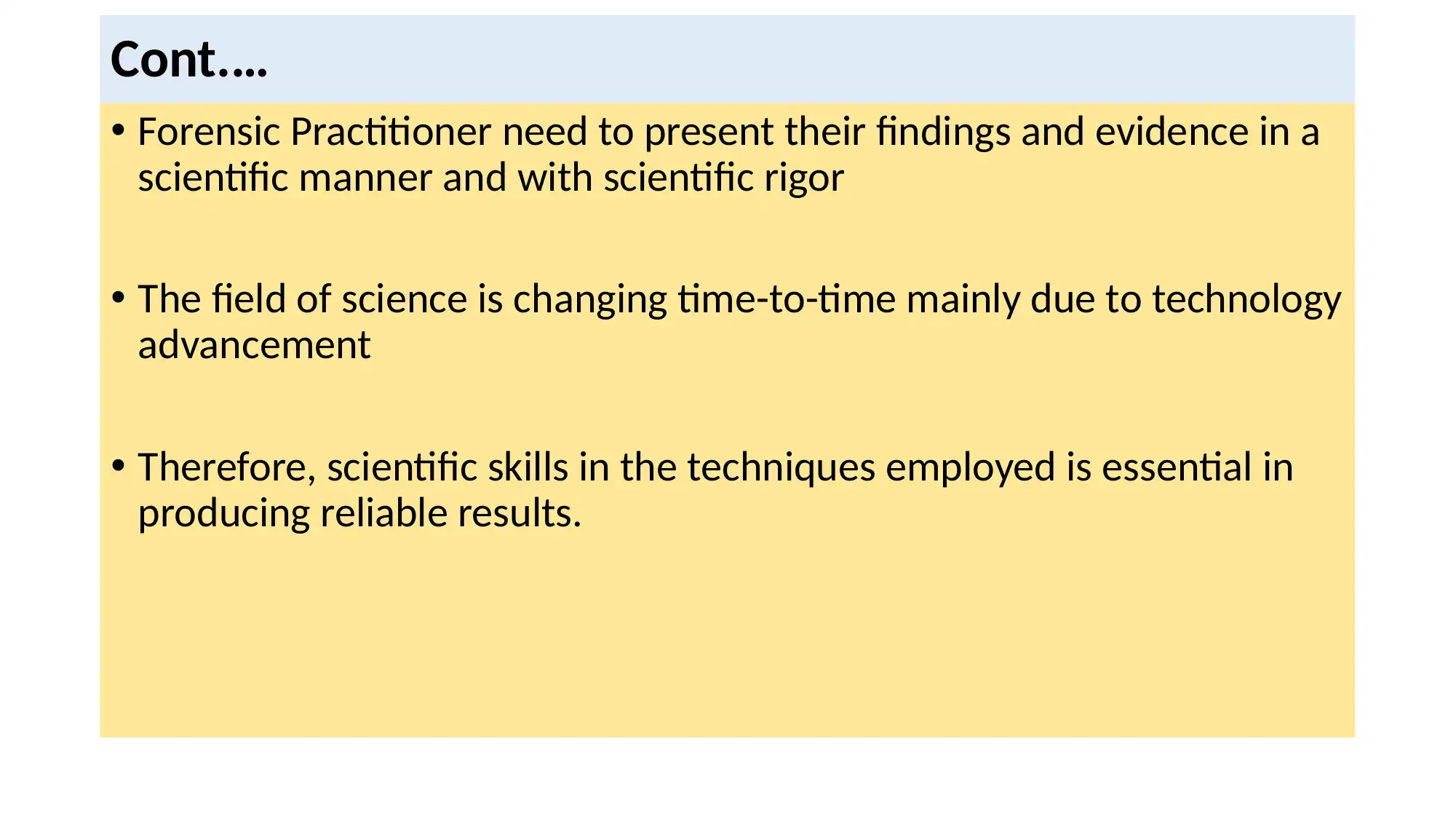

![[object Object]](/_next/static/media/star-bottom.7253800d.svg)